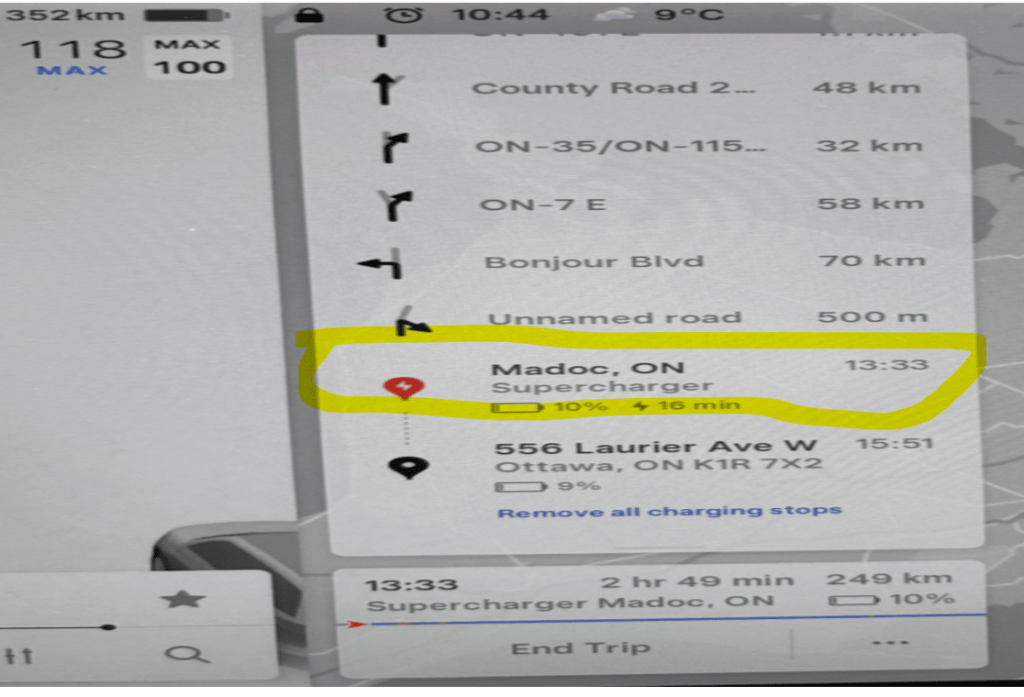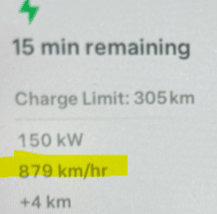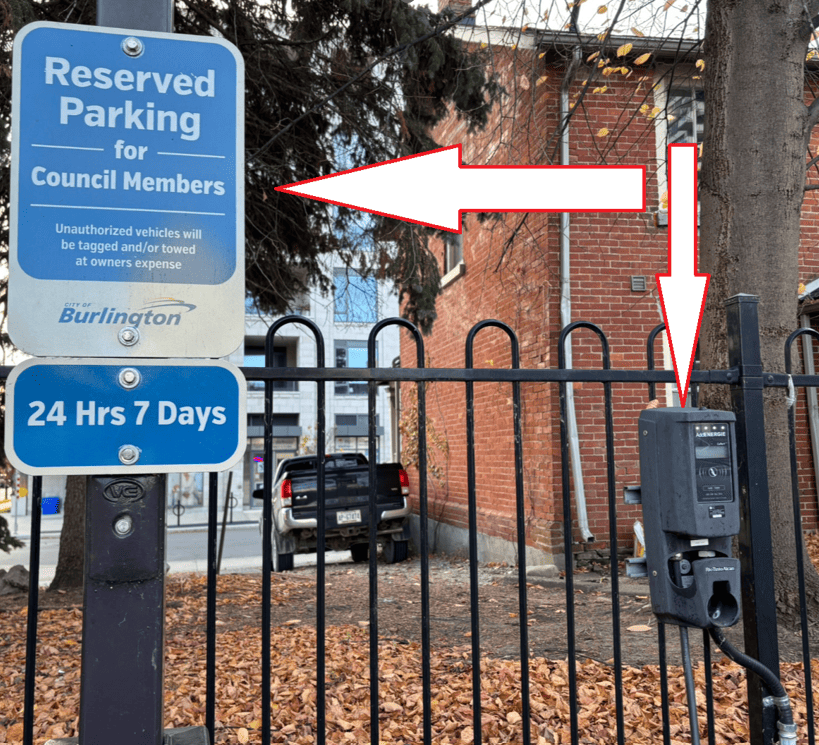Burlington has spent approximately $1,400,000 to install 29 EV charging stations, and the 2025 budget provides for this to increase.
How effective are these EV chargers?
Disclaimer: This is not an anti-EV rant or an anti-charger rant. Please comment below if you disagree with this post. This post looks at the type of chargers the city is installing and questions the usefulness/effectiveness of those chargers.
How charging an EV works
For day-to-day driving, the average EV owner charges at home. They have installed a charger, or have a standard 120-volt outlet, or a dryer/stove outlet to charge their vehicle.
For a longer drive, enter your destination into the car’s navigation system and follow the car’s directions. For example, a trip from Burlington to Ottawa requires a charge at home before departure, and a 16-minute charge in Madoc Ontario enables you to complete the journey.

The TELSA charging ecosystem is designed to make sure you rarely or never wait for a charger. TELSA software tracks how many cars are expected to charge at a location and if it looks like there will be a wait the software starts rerouting cars to other chargers. FLO and Ivy have a similar feature.
Most of us have filled up at a gas station. In a minute or two you can put in ten litres of gas and you’re good to go for about 100 km. Park at a city charger, plug in for one hour and you’re good to go for about 35 km if no one else is charging and about 18km if two cars are using the charger.
There is a lot of confusion about charging times. The chargers the city is installing are great for at-home charging, plug in and get a full charge overnight. Private companies are installing high-speed chargers, we’ve seen them at Maple View Mall (Tesla) and beside Denningers at the Burlington Centre (FLO).
High-speed chargers complement at-home charging.
With a gas car you have one option, go to a gas station and fill up. With an electric car, you do your day-to-day charging at home, while you sleep, and your road-trip charging at high-speed charging stations.
The chargers Burlington has installed and plans to install don’t fit into the charge-at-home or road-trip scenario.
One of the reasons we see the Burlington chargers being used is because the electricity is free. The cost of the electricity is paid for by “The Atmospheric Fund” not Burlington taxpayers. Another reason people use these chargers is that the EV parking spots are often the only spots available in the downtown core, so why not plug in, and get some free watts while enjoying an evening out downtown?
What about people living in condos downtown where the condo does not have charging stations?
If you live in a condo downtown, one without a charging station, you can use one of the city’s chargers but only for four hours at a time. In those four hours, if you’re lucky, you’ll get about 140 km of driving range.
Is the city promoting the use of electric vehicles by installing these chargers?
People driving through Burlington use the high-speed Tesla chargers at Mapleview or the DC fast chargers at the Burlington Centre. If you’re on a road trip you are not going to stop at a city charger for ten to sixteen hours to charge up your car, fiddling with the car or the parking spot every four hours, you go to a high-speed charger for twenty minutes and then get on your way. Imagine having to stop for ten hours to drive for four hours. Not many people would buy electric cars. High-speed chargers solve this problem and make electric cars a great option for road trips. The city chargers are so slow they have the potential to discourage people from buying electric cars.
Relative Costs
Most EV owners charge at home on low-speed (Level 2) chargers. The car can charge up overnight when electricity rates are low. The 10 litres of gas you need to go 100 KM might cost $15. The electricity you need to go those same 100 km will cost around $2.00.
The city has installed 29 chargers, costing approximately $50,000 each, totaling approximately $1,400,000.
The 2025 budget sets aside another $100,000 for EV chargers, compared to the money our council spends this is a drop in the bucket.
Questions? (Please comment)
Before ChargePoint, Flo, Tesla and others installed high-speed chargers the city starting the process made sense. Is it time to say we have enough chargers?
Should Burlington be competing with the private sector by installing EV chargers?
If you have an EV would you use the city chargers if you had to pay for the electricity?


Burlington just announced that a new high-speed charger has been installed in the parking lot at 391 Brant St. This charger does not support the North American Charging Standard (NACS) being adopted by all EV manufacturers. TESLAs and new EVs require an NACS plug. The CSS adapter, that comes with a TESLA, does not work at these chargers. Again, how does this encourage EV ownership? The real impact of these new chargers is four fewer parking spots in the downtown core.
There is one charging station in the downtown core without a charging time limit, this one provides roughly 50km of charge per hour. With the proposed $100,000 spend in 2025 Burlington will have spent $1.5 million dollars on electric vehicle chargers. I’m glad the 7 members of council are being encouraged to buy electric cars.


Why, oh why are the parking spaces for EVs in the city hall parking lot not opened up to the general public on the weekends? I find this rather like “a dog in the manger” attitude. I wish that city hall would not be so selfish.
Almost $50.000.00 to install each charger seems excessive to me. I will stick with my gas guzzeler for now. Government is involved, it is only going to get worse and more expensive.